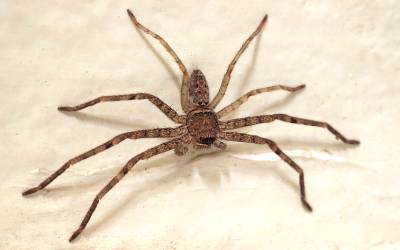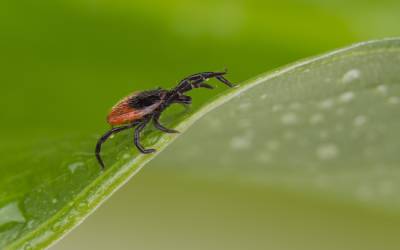 The little brown spiders you’ve been seeing around the outside of your house lately are most likely hobo spiders. Hobo spiders are an invasive species that are now common in the Pacific Northwest; they have been spotted in Idaho as early as the 1960s and in Utah starting in the 1990s. More recently, they’ve been spotted in the backyards of a lot of our customers.
The little brown spiders you’ve been seeing around the outside of your house lately are most likely hobo spiders. Hobo spiders are an invasive species that are now common in the Pacific Northwest; they have been spotted in Idaho as early as the 1960s and in Utah starting in the 1990s. More recently, they’ve been spotted in the backyards of a lot of our customers.
Having a fear of spiders is natural, but it is important to learn about how to deal with spiders properly so that you don’t accidentally wipe out any beneficial species on your property. The spider experts at Rentokil are here to teach you how to identify hobo spiders and what their bites are like. Read on to learn!
Identifying Hobo Spiders in Northern Utah
Hobo spiders are often confused for similarly-colored spiders, like the brown recluse. There are some distinct features that you can use to identify them with, though. Here are a few:
- Size: Hobo spiders with their legs extended are about the size of a nickel. Brown recluses, for comparison, are about the size of a quarter.
- Markings: Hobo spiders have lots of intricate markings across their backs in different shades of brown. Brown recluses have no markings, just differently colored segments.
- Webs: The web of a hobo spider will be close to the ground and look like a funnel with a dense structure and a distinct opening.
Are Hobo Spiders a Health Risk?
Hobo spiders are able to bite, but their venom has been classified as non-toxic by the CDC. Their bites were formerly believed to induce tissue damage and necrosis, or skin death, which contributed to their being confused with brown recluses.
Hobo spiders rarely bite—like many kinds of spiders, they would much rather flee than resort to attacking. If you are bitten by one, here is what you can expect:
- Redness and swelling at the bite
- Moderate pain for about 12 hours
- Leg twitches
If your symptoms extend beyond these, you might have been bitten by something else. Talk to your doctor about prolonged spider bite symptoms.
Hobo Spider Control in Northern Utah
If you are particularly anxious about the number of spiders on your property, whether they’re hobo spiders or not, you can always call your local pest control company about them. At Rentokil, we conduct holistic home inspections for every customer to determine spider species, threat levels, and vulnerabilities that could be attracting them. Contact us today for a free quote on spider control!

 We all look forward to the warm days spent out in the sun during summer. However, the more time we spend outside, the higher our risk of a tick bite becomes. Ticks love areas with consistent warmth and humidity, especially when humans and animals are around. They live in the woods, around hiking trails, in backyards, and many more areas. Ticks have also expanded to more regions than usual recently due to
We all look forward to the warm days spent out in the sun during summer. However, the more time we spend outside, the higher our risk of a tick bite becomes. Ticks love areas with consistent warmth and humidity, especially when humans and animals are around. They live in the woods, around hiking trails, in backyards, and many more areas. Ticks have also expanded to more regions than usual recently due to